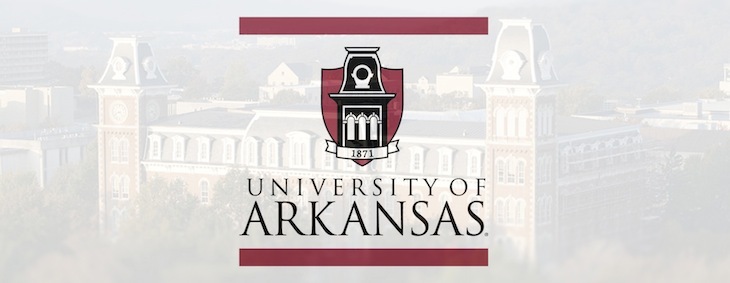University of Arkansas leaders say Walton-funded school of art will impact all disciplines
by September 18, 2017 5:00 pm 831 views

The planned University of Arkansas School of Art is a boon to the entire university, not just aspiring artists and art historians, Chancellor Joseph Steinmetz said, following his “State of the University” message Thursday (Sept. 14) in the Faulkner Performing Arts Center on campus.
The Walton Family Charitable Support Foundation of Bentonville last month announced a $120 million gift to establish the school, an investment Steinmetz called a “huge vote of confidence” for the university. About $50 million of the money will go to endowed scholarships, travels grants and internship programs and other financial support for students, $16.5 million will go toward endowed faculty positions, $33.5 million will go to developing curriculum and programs, and $10 million will go toward renovating the Fine Arts Center and supporting the Fine Arts Library, according to the UA.
In addition to bolstering the school’s art program, university leadership said support for the art school will provide more opportunity for cross-disciplinary collaboration with the arts and the UA’s other schools.
While Steinmetz was executive vice president and provost at Ohio State University, he was part of a group that helped found the Alliance for the Arts in Research Universities.
“Its whole premise is a premise I believe in,” Steinmetz said. “It doesn’t matter if you’re a physicist or a neuroscientist of if you’re in the humanities or the arts, the creative process touches or improves everyone.”
The School of Art, to be housed in the J. William Fulbright College of Arts, plans to increase its faculty by 70% during a transition period that will last about five years.
“Before, our faculty wasn’t large enough to even handle the students they had that were just art majors, so one of the nice things about increasing the faculty size — it will be increased by 26 and that’s substantial growth — is it will allow art teachers to teach non-art students,” Steinmetz said. “That’s a first step,” providing opportunities for an engineer or somebody in business to benefit from art classes.
Formal relationships between schools will also likely play a role, he said. Steinmetz sees potential for business students to minor in graphic design, for example, or for the Sam M. Walton College of Business to create an entrepreneurship program for artists.
“I really see that as a synergy we’ll see across campus. Other areas, include architecture, education — virtually any college will have those kinds of relationships,” Steinmetz said.
In a newsletter distributed by the Walton Family Foundation the day the $120 million gift was announced, chair and founder of Crystal Bridges Museum of American Art, Alice Walton, expressed support for the integration of arts education into other subjects.
“Art broadens our minds and expands our horizons — everyone’s horizons. It shifts our perspective and elevates our creativity. Every student can learn about art and apply creative thinking to excel in his or her chosen field of study. This will help develop not only inspiring artists but stronger business leaders, engineers and scientists as well,” she wrote.
Crystal Bridges is working with the university during expansion of its art program, said Margi Conrads, director of curatorial affairs for the museum. On the day the school was announced, Conrads praised UA’s vision for “art to infiltrate the entire university environment,” as expressed then by Fulbright Dean Todd Shields. Conrads said the approach will only benefit students.
“It is going to make a huge difference for education for Arkansas,” she said, adding, “There can also be a public and community impact that could end up impacting nationwide.”
The founding of Crystal Bridges in 2011 set off a series of events in Northwest Arkansas that has resulted in the emerging of a number or new arts organizations, programs and events.
Shields said, “We’re aiming to create an artistic hub for this region of the country, and to do that on a national scale you have to be a school of art.
“All of the other top art programs across the nation are schools, and at some point you grow beyond a department to become a school because the need for it and the demand from students is so great,” Shields said.
